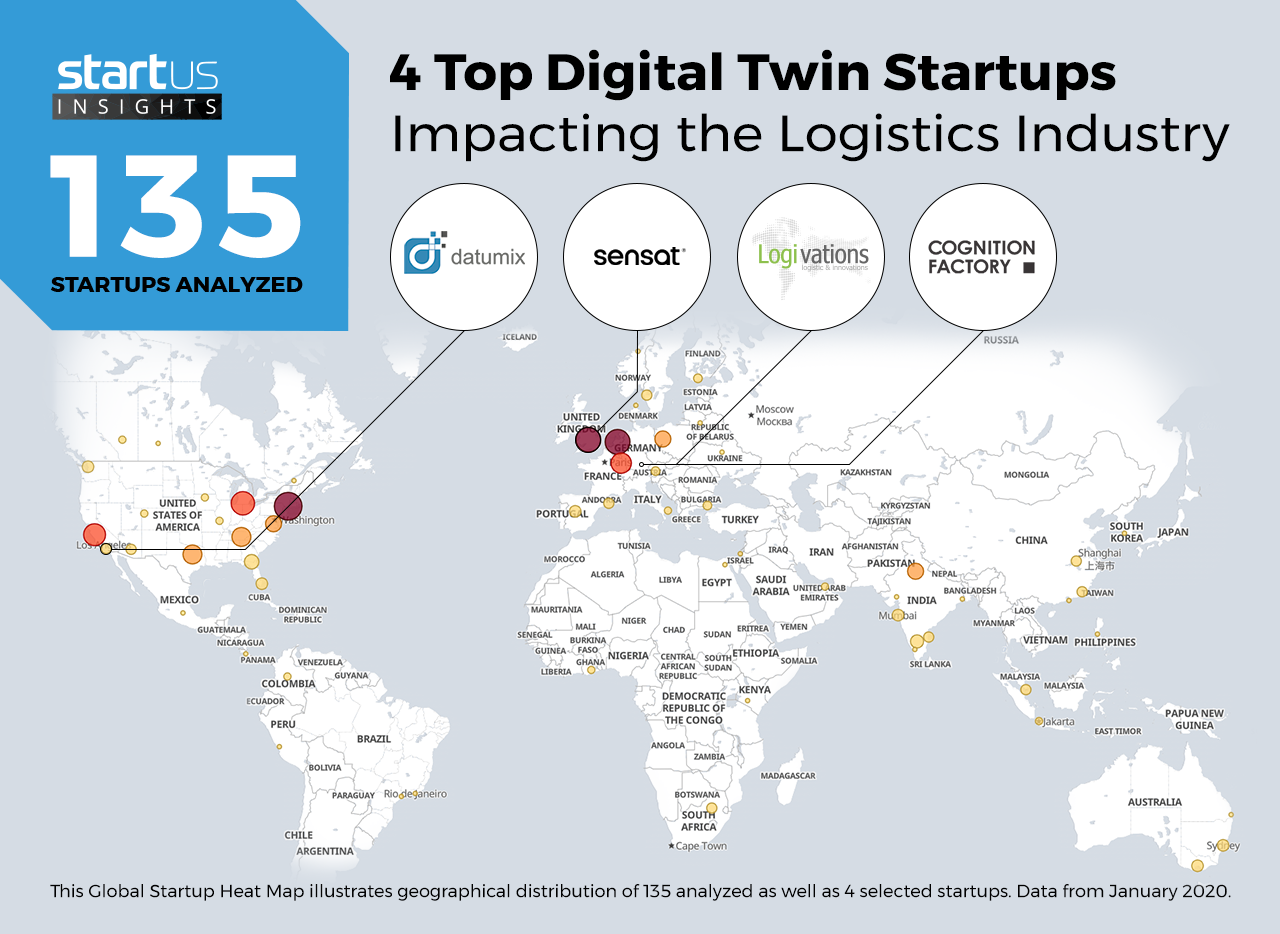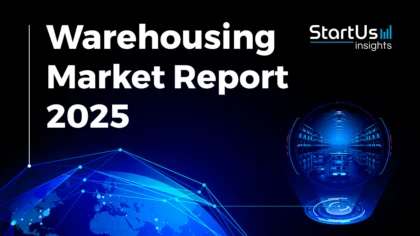Our Innovation Analysts recently looked into emerging technologies and up-and-coming startups working on solutions for the logistics sector. As there is a large number of startups working on a wide variety of solutions, we want to share our insights with you. This time, we are taking a look at 4 promising digital twin startups.
Heat Map: 4 Top Digital Twin Startups
For our 4 top picks, we used a data-driven startup scouting approach to identify the most relevant solutions globally. The Global Startup Heat Map below highlights 4 interesting examples out of 135 relevant solutions. Depending on your specific needs, your top picks might look entirely different.
Datumix – Equipment Condition Monitoring
The performance of machinery in the supply chain process is crucial. Machinery that breaks down regularly has a detrimental impact on the business. The application of digital twin in warehouse and inventory handling to monitor the performance of machinery and other equipment eliminates downtime by enabling predictive maintenance strategies to be in place.
The US-based startup Datumix provides a virtual 3D simulation of the required equipment. They combine machine learning to develop a digital twin that is used to monitor the performance of equipment, before installing the algorithm, in real-time. Data derived from the 3D model coupled with artificial intelligence (AI) is then used for the maintenance of the equipment.
Cognition Factory – Warehouse Simulation
Inventory distribution centers and warehouses are major components of logistics infrastructure. Automation of warehouses without risking downtime and the optimal configuration of the robot fleet is a hard task. Simulation using digital twins enables companies to analyze the potential impact of layout changes or new processes and supports dynamic optimization of operations before the actual change is made.
German startup Cognition Factory offers CognitiveFlow, an AI-based digital twin solution for simulating the warehouse. The simulation software is used for the planning, configuration, and continuous optimization of mobile robots and material handling systems in the warehouse. This solution integrates data from both on-site and outside the system.
SenSat – Logistics Infrastructure & Design
Logistics companies are looking into virtual and augmented reality processes to improve the design and efficiency of their supply chains. Design, operations, and optimization of logistics infrastructure are highly impacted by using a digital twin technology. Digital twins for infrastructure, such as warehouses or distribution centers, enables precise and accommodating designs and layouts for new facilities.
British startup SenSat offers cloud-based digital twin solutions to simulate real-world conditions in real-time. Their solution allows for analyzing a system using visual overviews and simultaneously interacts with multiple data sets. This enables companies to optimize space, labor, and material movement by using simulations of the warehouse.
Logivations – Logistics & Supply Chain Network Optimization
Companies look to improve their supply chain designs constantly by optimizing their logistics networks regularly. Traditional supply chain design involves hiring an expert who uses complex software to deal with unreliable data and makes a decision that may not always turn out as expected. Novel solutions include a collaborative analysis representing the real-time environment and collecting quantitative data.
German startup Logivations offers AI-based Web-to-Modeling & Optimization (W2MO) software to accurately create the digital twin of a logistics network. The designed supply chain is constantly optimized by modifying and manipulating the network. The digital twin is integrated with an AI algorithm to guide the simulations to optimize the structures of distributed networks.
What About The Other 131 Solutions?
While we believe data is key to creating insights it can be easy to be overwhelmed by it. Our ambition is to create a comprehensive overview and provide actionable innovation intelligence for your Proof of Concept (PoC), partnership, or investment targets. The 4 startups showcased above are promising examples out of 135 we analyzed for this article. To identify the most relevant solutions based on your specific criteria and collaboration strategy, get in touch.










